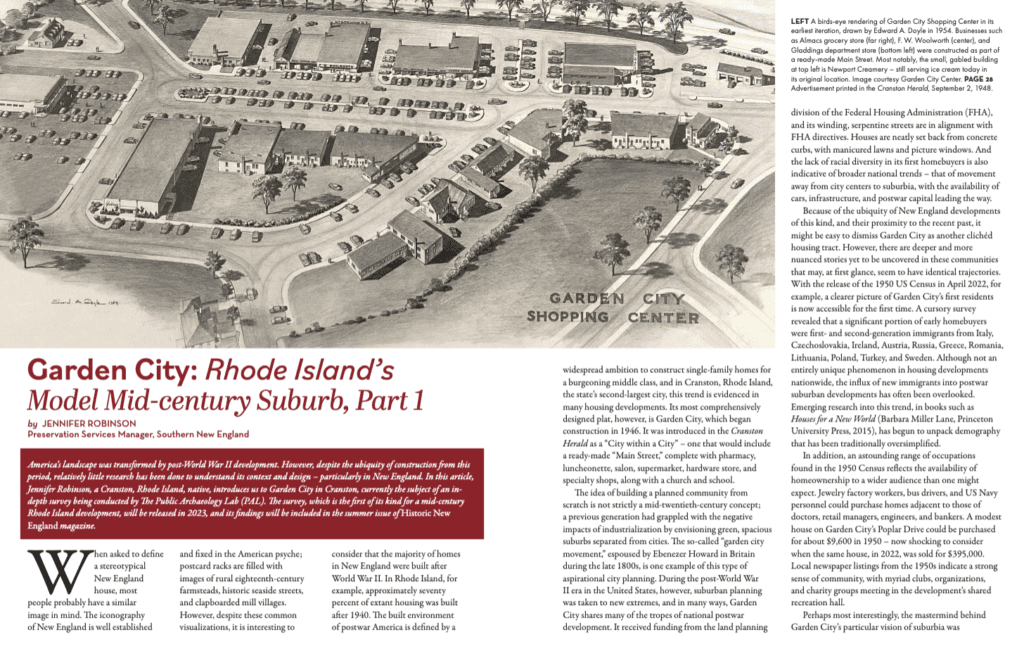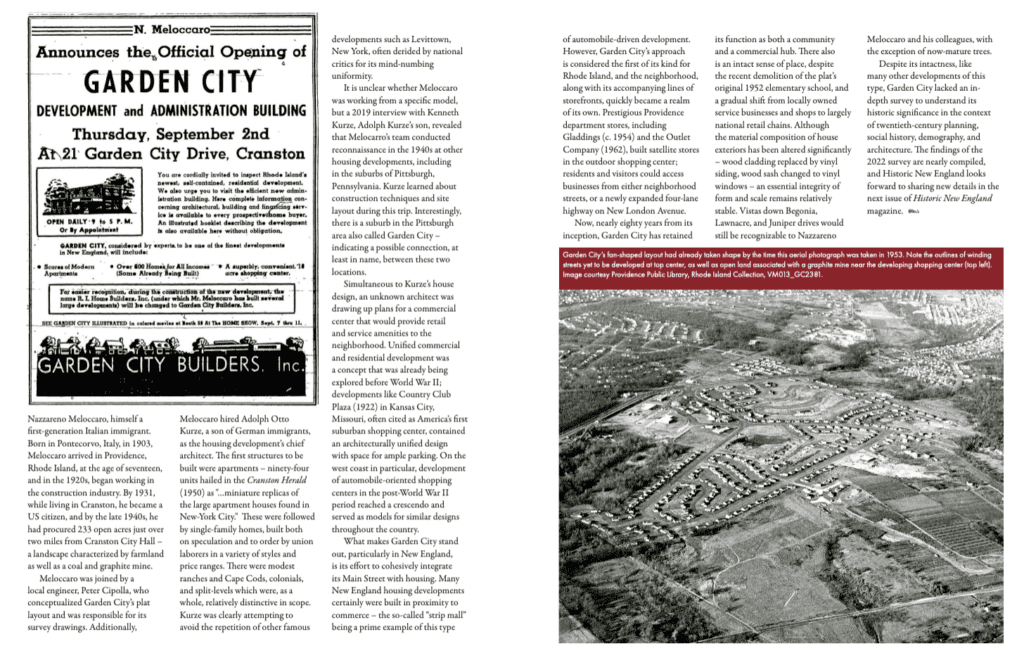Search Posts
Recent Posts
- Vinny Paz to be inducted TODAY into the International Boxing Hall of Fame – CES Boxing June 7, 2025
- In the News… quick recap of the week’s news (6.7.25) June 7, 2025
- Burn with Kearns: Strong without the spend: How scraps became strength tools – Kevin Kearns June 7, 2025
- Rhode Island Weather for June 7, 2025 – Jack Donnelly June 7, 2025
- How to advocate for threatened properties: The Heritage Alliance of Pawtucket June 7, 2025
Categories
Subscribe!
Thanks for subscribing! Please check your email for further instructions.

Cranston’s Garden City in process to be named to National Register Historic Districts
Garden City has moved forward in receiving a grant to support its application to be named a National Register Historic Districts location. The award to support the application development comes after five years of advocacy to get to this point. A member of the Garden City Alliance, Elizabeth Salzillo, has made this a labor of love to work with the City of Cranston planning department on the process of the historic designation.
The award is for: CRANSTON/Preserve Rhode Island: $16,500 to research/prepare a National Register Historic District Nomination for Garden City – and is being made by the Rhode Island Historical Preservation & Heritage Commission. The Commission operates a statewide historical preservation program that identifies and protects historic buildings, districts, structures, and archaeological sites. The Commission also develops and carries out programs to document and celebrate the rich cultural heritage of Rhode Island’s people.
Garden City, which began construction in 1946, was one of, if not the first, planned communities post World War II in America. It was introduced designed as a “City within a City” – one that would include a ready-made “Main Street,” complete with pharmacy, luncheonette, salon, supermarket, hardware store, and specialty shops, along with a church and school. Homes would be built as starter homes, where, back in the 50s most families had one car and stay-at-home mothers were more plentiful than a 2-person working family today.
Welcoming men back from the war with such a community was designed to get that generation back and off to a new start. The Garden City Shopping Center contained a well-chosen selection of retail stores, service locations, and entertainment. A bowling alley, and movie theater. A supermarket. Children’s clothing stores and a toy store. A bank. Next to the shopping center was a Catholic Church, with a school. Not far away was a public elementary school, Garden City School which was entirely rebuilt with a nod to its history in 2023. Children could walk to school. Moms could walk to the shopping center if their spouses had the car at work.
Today most homes have had some renovations, with the adding of pools, or great rooms, or finished basements, or additions. No two houses were identically placed next to one another, or were painted exactly the same. Generous backyards spoke to the family at the center of the unit. Streets were named, in large part, for trees and flowers. Shade trees were – and are – plentiful.
Written by Jennifer Robinson, Preservation Services Manager, Southern New England, “The so-called “garden city movement,” espoused by Ebenezer Howard in Britain during the late 1800s, is one example of this type of aspirational city planning. During the post-World War II era in the United States, however, suburban planning was taken to new extremes, and in many ways, Garden City shares many of the tropes of national postwar development. It received funding from the land planning division of the Federal Housing Administration (FHA), and its winding, serpentine streets are in alignment with FHA directives. Houses are neatly set back from concrete curbs, with manicured lawns and picture windows.”


READ the historical write-up, part one, in Historic New England: https://issuu.com/historicnewengland/docs/hne.winter2023final_1_/s/28012419 – or here:

_

The Garden City grant joins six other Certified Local Government (CLG) grants to support local preservation programs:
- COVENTRY: $10,000 to to survey the historic villages of Arkwright, Harris and Greene
- CRANSTON/Preserve Rhode Island: $16,500 to research/prepare a National Register Historic District Nomination for Garden City
- CUMBERLAND: $12,000 to research/prepare a National Register Historic District Nomination for Grant’s Mill
- EAST PROVIDENCE: $8000 to complete a condition assessment and preservation plan for the Newman Cemetery
- PROVIDENCE/Neutaconkanut Hill Conservancy: $7,500 to research/prepare a National Register Historic District Nomination for Neutaconkanut Hill Park
- SOUTH KINGSTOWN: $20,000 to survey/resurvey areas of Matunuck that are threatened by coastal flooding and sea level rise.
